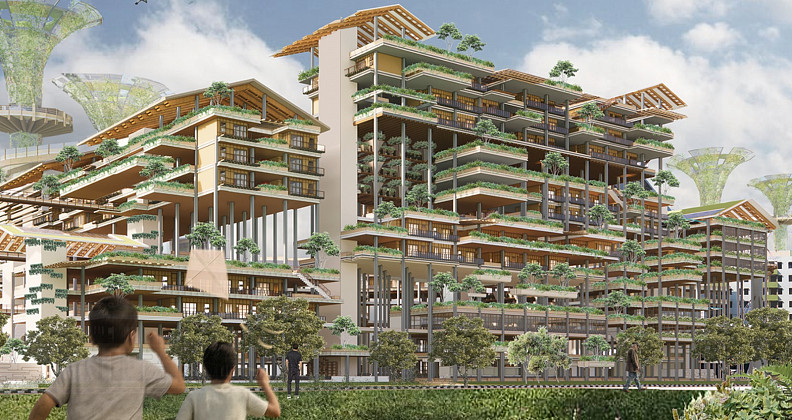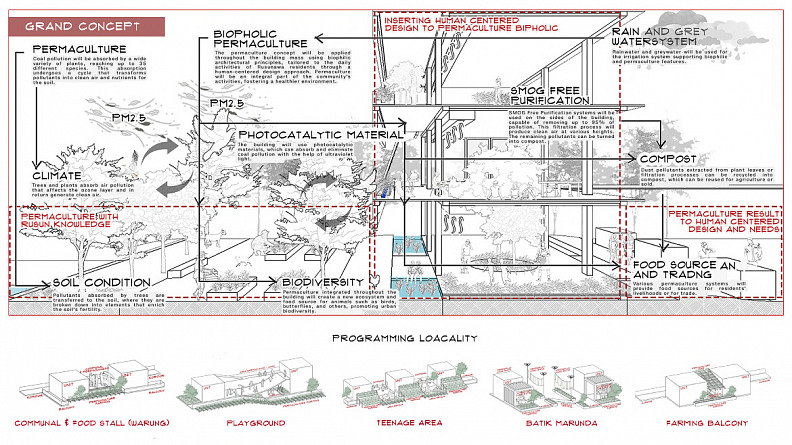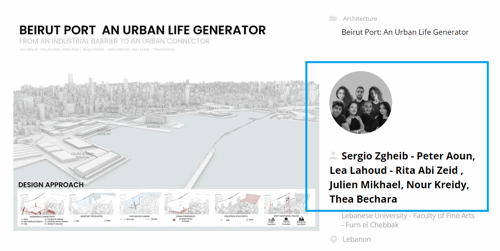Nuswa Bhuvana, Marunda Across Nature

Project idea
The main concept of the design is the use of up to 45 species of permaculture, applied through biophilic architecture. Permaculture is a sustainable agricultural system that improves environmental quality. In addition to permaculture and biophilic architecture, the design also incorporates photocatalytic materials and a SMOG Free Purifier system. Photocatalytic materials are recycled existing materials mixed with photocatalyst compounds, enabling them to absorb coal pollution and neutralize it with the help of ultraviolet light. Meanwhile, the SMOG Free Purifier system is a technology from China that can clean up to 95% of pollutants. The filtered dust residue can then be reused for the production of coal-based compost fertilizer.
The design scheme incorporates a solid void composition and variations in floor levels to maximize the integration of permaculture and biophilic architecture. With this scheme, the building mass is developed based on the typology of the existing rusunawa and the results of the site analysis.
Project description
Nuswa Bhuvana is a regenerative public housing project in Marunda, North Jakarta, designed with a biophilic approach and permaculture principles. It responds to the negative impacts of coal pollution by creating a healthier, natural, and meaningful living environment. The housing goes beyond providing decent shelter, offering regenerative spaces that encourage ecological activities such as urban farming, pollution management, and water conservation.
By integrating permaculture and biophilic design, Nuswa Bhuvana fosters strong connections between residents and their environment, forming a living and supportive system. It also strengthens the local economy by highlighting Marunda’s identity through farming, hydroponics, batik, mangroves, fisheries, and Betawi culture. Ultimately, Nuswa Bhuvana represents regenerative housing that harmonizes people and nature, building a healthy and resilient community.
Technical information
Most of the building materials use recycled concrete from the existing condition. The material is also mixed with Titanium Dioxide, allowing it to absorb and neutralize coal pollution with the help of sunlight. In addition to the concrete itself, the low-cost apartment also features wooden material accents.




